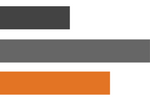Promoting Your Business Online
There isn’t a business or industry left where your customers are not online for the majority of their time. Promoting your company no longer requires heavy and expensive above the line marketing media. Getting started with advertising can be as easy as spending a nominal amount of money, finding an easy step-by-step guide and playing around with an online self-serve advertising platform.
The tricky part is to decide where to start. Some people will tell you Facebook is the way forward. Others will tell you to avoid all social media and start with search. Quickly all the acronyms will dazzle you, and you might decide just to give up and get a professional to do it. Here is a primer to help you avoid that, or at least stave that decision off for a bit.
Before you start, you need to have a good idea of how you will assess performance. I.e. what kind of leads and/or conversions is your website generating now. What would an acceptable cost per lead/conversion be? Perhaps you are still in the early stages of your business, and you need to get the word out. For any requirement, there is a right setup, granted you set your own expectations right.
In general, two overarching goals drive digital marketing. The one most will go for is direct response. This is the principle that every marketing dollar leads to a lead of conversion. On the other side of the spectrum is brand awareness. This is the idea of getting as many eyeballs on your ads, preferably the right audience. Brand awareness is more akin to traditional marketing, where it’s about reach and frequency. There are some platforms/publishers that tout providing the best of both worlds, i.e. reach but also strong lead/conversion generation. Some would call this brand response.
Roughly speaking you can put any display/banner type advertisement under the label of brand awareness. A banner on a website will have a smaller amount of people clicking on it (usually measured in clickthrough-rate). Typically display ads are bought on a cost per thousand (CPM) or cost per view (CPV) basis, which means that even if a user hasn’t clicked on your ad, you will still be charged. Some display platforms offer you a cost per click (CPC) model, which means that you won’t pay a thing until someone clicks on your ad. In some cases that might just mean free advertising as you will get free views (or impressions) but no cost.
Display banners can be put in the same category as video ads, such as Youtube 6 seconds bumper ads and in-stream ads. Native ads, ads where your advertisement appears as an article or piece of content, usually generate lots of views but not necessarily clicks to site.
One of the main reasons why display and video ads get low CTRs (but high views) is that people are in the middle of something else, i.e. reading an article of watching a video. The view could help in building brand awareness, but clicking out of the site and piece of content they are visiting is too much of an interruption to their flow. This also applies to Google Sponsored Promos, the ads that appear as email messages in someone’s Gmail inbox.
[Tweet ” Promoting Your Business Online #smallbusiness #marketing”]
Avoiding being interruptive to someone’s flow is the exact reason why search is the cornerstone of direct response. In search, you distinguish traffic that comes to you naturally from the search engine, without you having to pay for it, and the search traffic you pay for. The former is called organic search traffic. Optimisation for organic search is called Search Engine Optimisation (SEO) and is a slow burn. Your website needs to be in top shape to ensure that search engines, such as Google, can crawl and understand what your site is about. SEO work usually has a technical and a contents component. Having a good website and strong content helps you rank higher.
If you can’t wait for SEO to kick in, there is always Paid Search. Google offers a self-serve platform called Google Ads, which offers a turnkey solution for anyone starting out. You will find that the Google Ads Express option does not bring the control and granularity you need, Google Academy offers training and certification for free. Soon you will be an advanced user and utilising a massive collection of Adwords scripts like a pro.
Where display ads are about reach and search is about choosing the right keywords to target, there is also ad space in between brand awareness and direct response. Paid social media has been working away to fill this gap. Facebook has had some reasonable success with their carousel format. Just be aware of paid social that it is still early days and performance is not guaranteed.
Image credit: Unsplash.com


 Hi, I'm Kelly O'Donnell.
Hi, I'm Kelly O'Donnell.